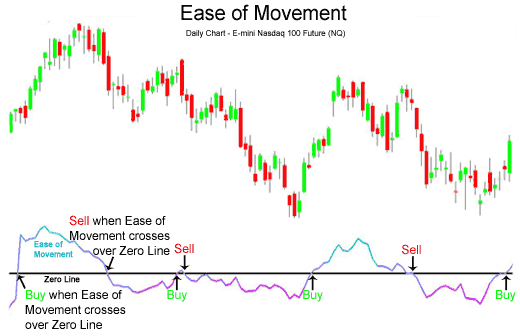Ease of Movement

Ease of Movement (EOM) is a technical indicator used to measure the relationship between price and volume in the financial markets. It helps traders identify the ease of price movement in an asset and can be used to spot potential buying and selling opportunities.
How to Buy and Sell Using Ease of Movement:
- Bullish Signal: A positive EOM value indicates that prices are moving upward with ease. Traders may consider buying the asset when the EOM line crosses above the zero line, suggesting a potential uptrend.
- Bearish Signal: A negative EOM value indicates that prices are moving downward with ease. Traders may consider selling the asset or taking short positions when the EOM line crosses below the zero line, suggesting a potential downtrend.
Pros of Ease of Movement:
- Combines price and volume: EOM considers both price and volume data, providing a comprehensive view of market activity.
- Identifies trends: EOM helps identify trends and potential reversals, aiding in timely entry and exit decisions.
- Simple interpretation: The indicator’s line crossing above or below zero provides clear buy and sell signals.
Cons of Ease of Movement:
- Lagging indicator: EOM, like many other technical indicators, relies on historical data, which may cause delays in reacting to rapid market changes.
- False signals: In choppy or sideways markets, EOM can generate false signals, leading to potential trading losses.
- Limited to price and volume: EOM does not consider other fundamental factors, potentially overlooking essential market influences.
It’s essential to use Ease of Movement in conjunction with other technical indicators, price analysis, and fundamental factors to validate signals and make well-informed trading decisions. Additionally, practice and testing in a demo or paper trading environment are recommended before applying it to real trades. As with any trading tool, risk management techniques should always be employed to protect capital from potential losses.